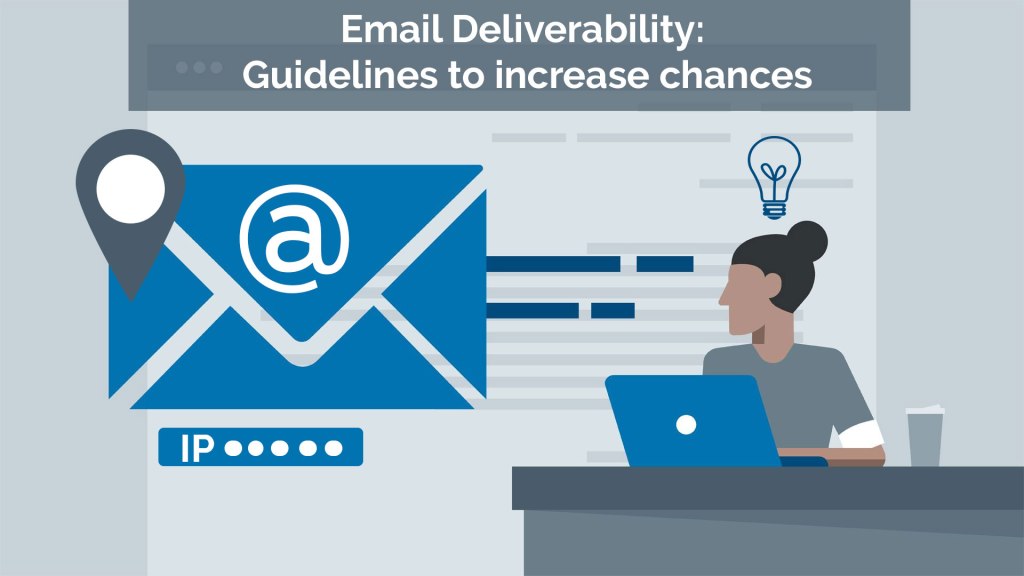Email Deliverability: Guidelines to Increase Chances
In today’s digital age, email communication is a cornerstone of business operations. Whether it’s marketing campaigns, customer support, or general correspondence, emails are an essential tool for maintaining a strong online presence. However, simply sending emails is not enough. Ensuring that your emails actually reach their intended recipients is equally crucial. This is where email deliverability monitoring comes into play, and in this article, we will explore some essential guidelines to increase your email deliverability.
Understanding Email Deliverability
Before diving into the guidelines, it’s important to grasp the concept of email deliverability. Email deliverability is the measure of an email’s ability to reach the recipient’s inbox without being flagged as spam or bouncing back. In essence, it determines whether your email will successfully land in the inbox of your audience.
Guidelines for Improved Email Deliverability
1. Maintain a Healthy Sender Reputation
Your sender reputation is vital for email deliverability. It is influenced by various factors, including email engagement, complaint rates, and spam reports. To maintain a healthy reputation, send relevant and engaging content to your subscribers. Regularly clean your email list to remove inactive or invalid addresses, and promptly address any subscriber complaints.
2. Use Double Opt-In Subscriptions
Double opt-in subscriptions require users to confirm their email addresses after signing up. This ensures that your list comprises genuine and engaged subscribers, reducing the chances of spam complaints and bounces.
3. Employ Email Authentication
Implement email authentication protocols such as SPF (Sender Policy Framework), DKIM (DomainKeys Identified Mail), and DMARC (Domain-based Message Authentication, Reporting, and Conformance). These protocols help verify your emails’ authenticity, thus increasing your chances of inbox placement.
4. Segment Your Email List
Segmenting your email list allows you to send highly targeted and relevant content to specific groups of subscribers. This enhances engagement and reduces the likelihood of your emails being marked as spam.
5. Monitor Your Email Deliverability
To ensure that your email campaigns remain effective, use email deliverability monitoring tools. These tools, such as an email deliverability agency, can track your email performance, identify potential issues, and provide insights for improvement.
6. Regularly Test Your Emails
Conduct A/B testing to evaluate different elements of your emails, such as subject lines, content, and send times. This data-driven approach can help you refine your email strategy for optimal deliverability.
7. Pay Attention to Email Frequency
Avoid bombarding your subscribers with emails. Finding the right balance in email frequency is essential. Too many emails can lead to subscriber fatigue and an increase in unsubscribe rates.
8. Optimize for Mobile
Ensure that your emails are mobile-responsive. With the majority of email opens occurring on mobile devices, it’s crucial that your content is easy to read and navigate on smaller screens.
9. Provide an Easy Unsubscribe Option
Make it simple for subscribers to opt out of your emails if they wish. This can prevent them from marking your emails as spam, which can harm your sender reputation.
10. Regularly Review and Update Your Email List
Keep your email list up-to-date by removing bouncing and inactive email addresses. This ensures that you are only sending to engaged subscribers who are genuinely interested in your content.
Utilize Email Deliverability Checker Tools
In addition to email deliverability monitoring, email deliverability checker tools can help you assess the deliverability of your individual email campaigns. These tools provide insights into potential issues and offer recommendations to improve your email’s chances of reaching the inbox.
In conclusion, email deliverability is a critical aspect of email marketing and communication. By following these guidelines and utilizing email deliverability monitoring and checker tools, you can increase the chances of your emails successfully landing in your recipients’ inboxes. This not only improves your communication with your audience but also safeguards your sender reputation, ultimately leading to more successful email campaigns.
Remember that the digital landscape is ever-evolving, so staying informed and adapting to best practices is crucial for consistent email deliverability success.

Leave a comment